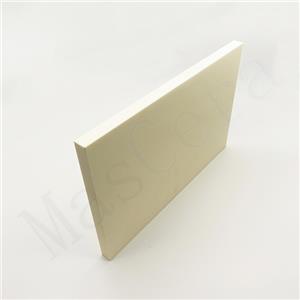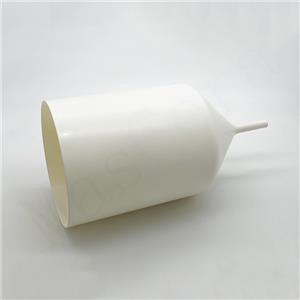Introduction to Advanced Ceramics Injection Molding Process
Ceramic Injection Molding (CIM) is a novel process for manufacturing ceramic components that combines the principles of polymer injection molding with ceramic preparation techniques. CIM is similar to Metal Injection Molding (MIM) technology and is a major branch of Powder Injection Molding (PIM) technology, developed on the foundation of mature polymer injection molding techniques. For the mass production of high-precision and complex-shaped ceramic products, the use of ceramic powder molding is highly advantageous.
The manufacturing process of ceramic injection molding primarily consists of four steps:
1. Feedstock Preparation: Suitable organic binders are mixed with ceramic powders at a specific temperature, dried, and granulated to create injection-ready feedstock.
2. Injection Molding: The mixed injection feedstock is heated to become a viscous melt, which is then injected into metal molds at a certain temperature and pressure. It rapidly solidifies into the desired shape, after which it is removed from the mold.
3. Debinding: Organic materials within the injection-molded part are removed through heating or other physical and chemical methods.
4. Sintering: The debinded ceramic green parts are sintered at high temperatures to achieve the desired appearance, dimensional accuracy, and microstructure of dense ceramic components.
Advantages of Injection Molding:
1. It can directly produce small ceramic components with complex geometries and special requirements, eliminating or reducing the need for expensive ceramic machining processes, thus lowering production costs.
2. High levels of mechanization and automation result in short molding cycles, only a fraction of the time required for casting and hot pressing. The molded parts have high strength, and automation in the production process is convenient, making it suitable for mass production.
3. Due to good flowability of the binder, the density of injection-molded green parts is uniform.
4. Uniform mixing of powder and binder, along with minimal interparticle gaps, leads to consistent shrinkage characteristics during sintering. This results in uniform density across all regions of the component, high geometric dimensional accuracy, and smooth surface finish.
Disadvantages of Injection Molding:
The initial equipment investment and processing costs are high, making it suitable primarily for large-scale production.
Applications: This technology is most advantageous for the mass production of high-precision, complex-shaped ceramic products. Currently, ceramic injection molding is widely used in the production of various ceramic powders and engineering ceramic products. Various precision ceramic components produced using this process are utilized in fields such as aviation, automotive, machinery, energy, optical communications, life sciences, and medicine.
XIAMEN MASCERA TECHNOLOGY CO., LTD. is a reputable and reliable supplier specializing in manufacturing and sales of technical ceramic parts. We provide custom production and high precision machining for a wide series of high performance ceramic materials including alumina ceramic, zirconia ceramic, silicon nitride, silicon carbide, boron nitride, aluminum nitride and machinable glass ceramic. Currently, our ceramic parts can be found in many industries like mechanical, chemical, medical, semiconductor, vehicle, electronic, metallurgy etc. Our mission is to provide the best quality ceramic parts for global users and it is a big pleasure to see our ceramic parts work efficiently in customers' specific applications. We can cooperate on both prototype and mass production, welcome to contact us if you have demands.




